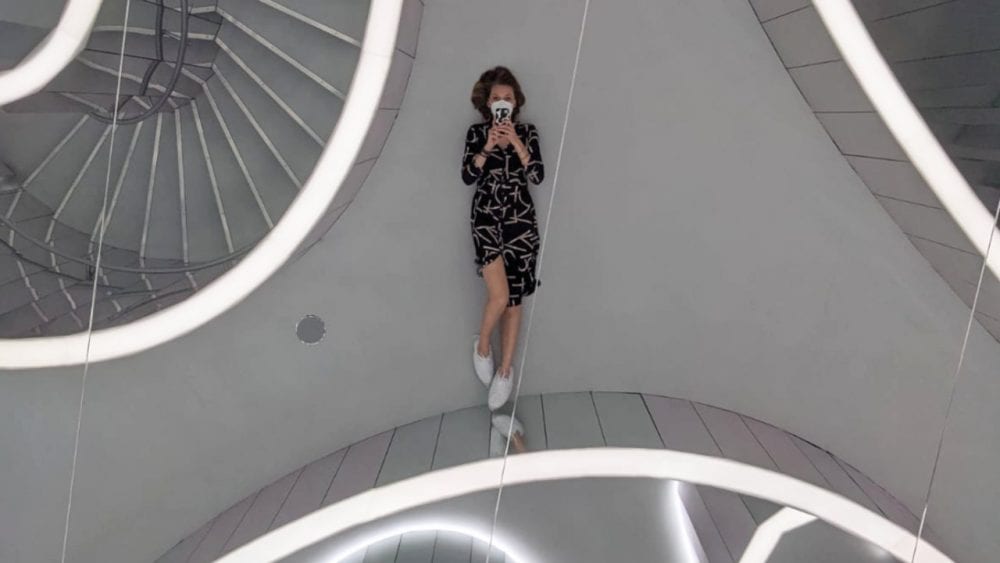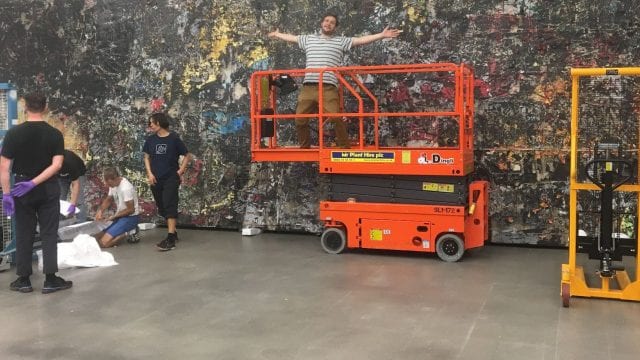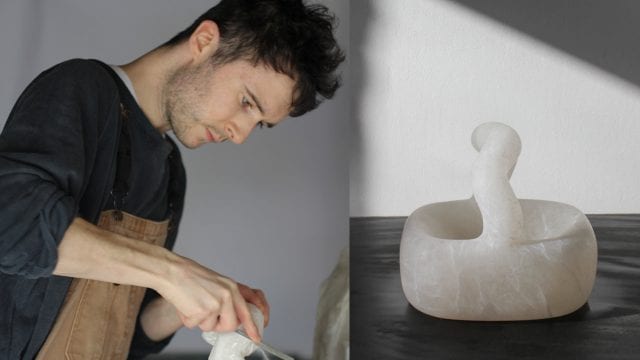Margot Mottaz is currently an Associate Curator at Superblue. She’s also on the International Selectors Committee of the Lumen Prize (first-round judge) and regularly writes about East Asian art.
The concept of art curation has evolved, from being associated with museums and their collections to being broadly employed throughout the art world. Galleries, art fairs and artist studios all may employ curators on a permanent or temporary basis. Having a ‘guest’ curator can give credence to a show, particularly if the curator is well-known in the field. A curator making daring or unconventional selections can draw attention and hype to an exhibition, whereas a poor selection can draw negative reviews.
The path to curation is not always clear, as curators can come from different backgrounds, and people can transition to and from a career in curation. Artists themselves can be curators, as in the case of the Royal Academy Summer Exhibition.
I sat down with Margot Mottaz to discuss her path into curation and her advice to others interested in this field. She is currently an Associate Curator at Superblue. She’s also on the International Selectors Committee of the Lumen Prize (first-round judge) and regularly writes about East Asian art.
Tell me a bit about your background and how you knew you wanted to be a curator?
I did an MA History of Art at Edinburgh University and then an MA Curating the Art Museum at Courtauld. While my jobs have taken me into the worlds of luxury media in Hong Kong and advertising in Switzerland, I think deep down, I always knew I wanted to work in the arts. That drove the decision for both my degrees and my current career path.
What education is needed or is available to get into a career as a curator?
While curating as an academic field is fairly recent, many universities worldwide now offer curating courses, often at the MA level. I find my background in art history to be useful in my work today, but several of my MA classmates came to curation with an undergraduate degree in other fields, such as history or English literature; and it was great to have that diversity of perspectives.
My advice for anyone considering a curating course would be to figure out what area you’re most interested in. For instance, the MA at The Courtauld is focused on museums and public institutions, whereas the MA at Goldsmiths is geared more towards developing independent practices. Both are great; it’s a matter of understanding what sort of environment you want to work in down the line so that you set yourself up with the best skillset and network upfront.
Do you feel that self-taught people should now pursue a course or a degree?
I think that’s probably a fair assessment, especially because so many degrees are now available, though I’m also biased because I did an MA in curating. There’s no doubt that the practical components and work placements built into the courses help understand the different facets of the job and, crucially, developing a network. And naturally, the academic environment also encourages a deep knowledge of the evolution of the field and best practices. The degree doesn’t guarantee a job in curating, as it remains a fairly competitive environment with limited opportunities, but it certainly gives you a leg up.
This being said, there are so many aspects of my work that I continue to learn on the job. Being a curator can mean so many things today. If the original meaning of the role – to care for a collection and plan exhibitions, which still holds. Yet, it can extend to include a combination of further skills such as artist liaison, project coordination, education, fundraising, stakeholder management, among others. My current role certainly encompasses all of these at different times, depending on whether I’m working on an exhibition or a new artwork commission, for instance.

Installation view, Copeland Park, London, UK
Source: superblue.com
What is a realistic career progression for a curator? What does a successful career as a curator look like?
I don’t know if there is a right answer to this one. One thing that I’ve learned is that there aren’t many rungs on the curator ladder, so to speak, so it can be difficult to gauge progression on paper. Plus, private and public institutions often use slightly different title conventions, which complicates things further. A rule of thumb would probably be something like a curatorial assistant, assistant/associate curator, curator, senior curator, and chief curator.
I certainly look up to my colleague and mentor, Kathleen Forde (Superblue’s Senior Curator) who started her career as a curatorial assistant and made her way up to chief curator over the course of 15 years, working for prestigious museums and collections like EMPAC, SFMoMA and Borusan Contemporary. I’d feel very fortunate if my career followed a similar path!
What is the most rewarding and most challenging part of your job?
At a very basic level, curating is rewarding to me because it’s the perfect mix of academic rigour and practical application. It’s additionally exciting to be part of an innovative organisation like Superblue because, in some ways, we’re creating scholarship and defining a new moment in contemporary art in real-time.
Working for a company dedicated to experiential art – think immersive, large-scale, interactive — it’s a joy and an honour supporting artists in developing their ideas and making them happen, from creative brainstorming sessions to technical workshops. I’ll never get bored of getting a glimpse into the minds of artists who have the imagination and know-how to create works that are visually stunning and technologically complex.
At the same time, that’s also where the challenge lies: in finding the right balance between vision and reality. It’s part of my job to facilitate the discussion between the artist and the hosting institution, be it one of our own Superblue spaces, a museum or a client’s property, and ensure everyone is happy throughout the process.

Source: superblue.com
What are the benefits of being a full-time curator (gallery or museum) versus a freelance project-based curator?
I really enjoy working for an organisation full time at this stage in my career. The experience I’m acquiring now, working with some of today’s best contemporary artists and a team whose expertise spans the worlds of art, entertainment, design, architecture, among others, is invaluable.
I can definitely imagine a future in which I am self-employed but in the medium term. I could envision maintaining a full-time role and guest curating exhibitions for other institutions. I think that would be a sensible way of dipping my toes into a freelance practice without taking on the full risk.
What’s the most exciting project you’ve worked on so far?
Without a doubt: Superblue Miami, our first of many experiential art centres occupying a whopping 50,000 square feet with installations by Es Devlin, teamLab and James Turrell. It’s been fascinating taking what I know about creating exhibitions for museums and translating that for a new type of larger-than-life ticketed venue.
We’re building something completely new with Superblue and hopefully changing the paradigm of how art can be made, interpreted and monetised. Pardon the cliché here, but there’s never a dull moment!
Are there any curators you particularly admire?
Barbara London (from a video art/new media perspective) and Alexandra Munroe (from an Asian art perspective). They’ve both changed those fields for the better and are such pioneers!





